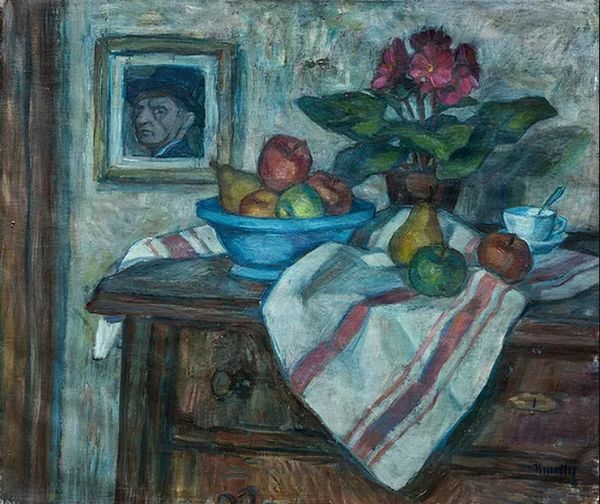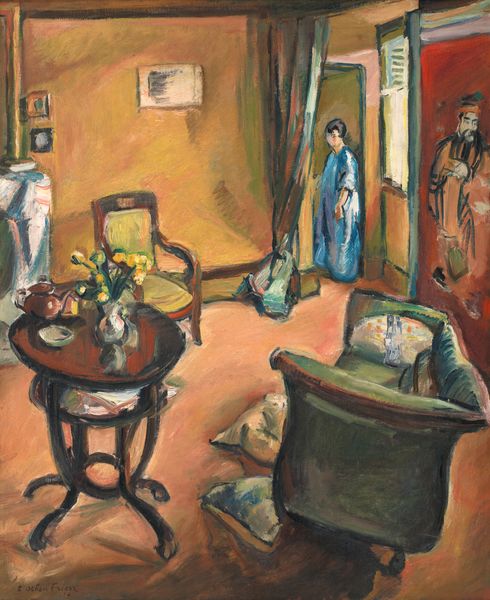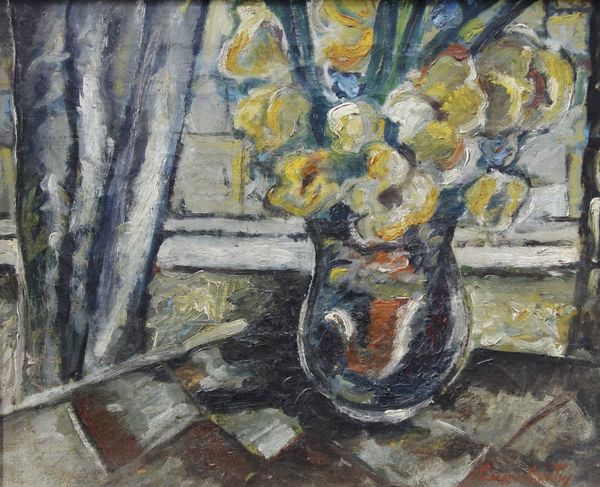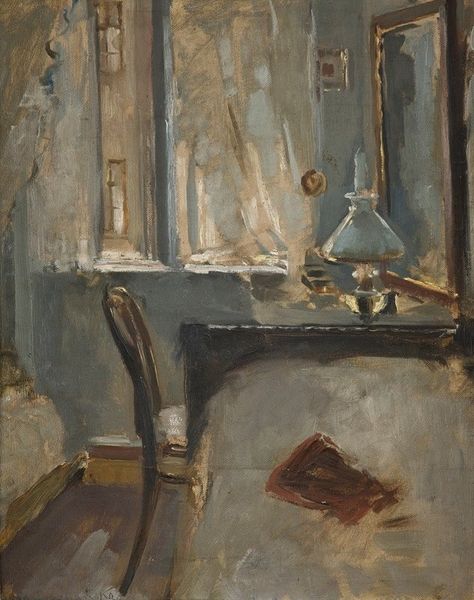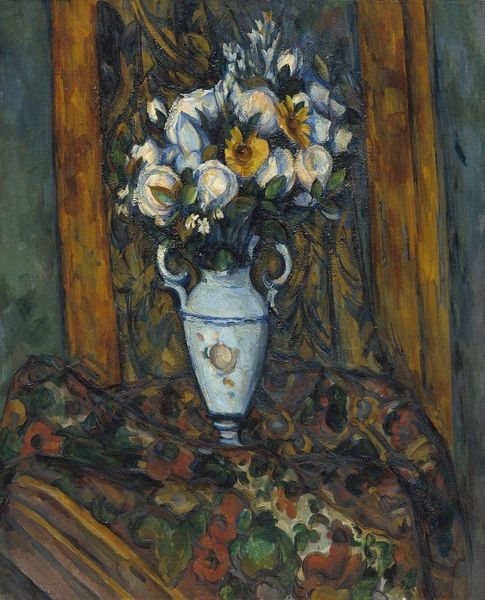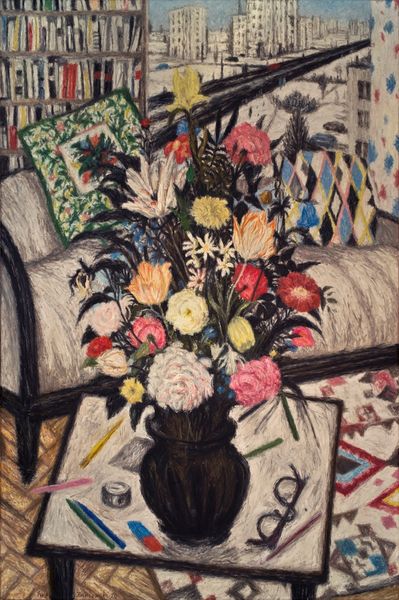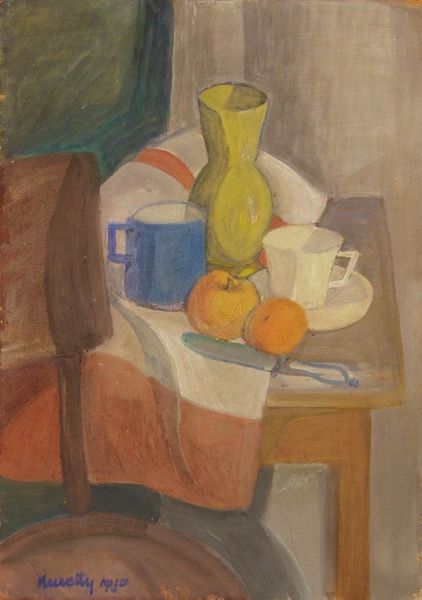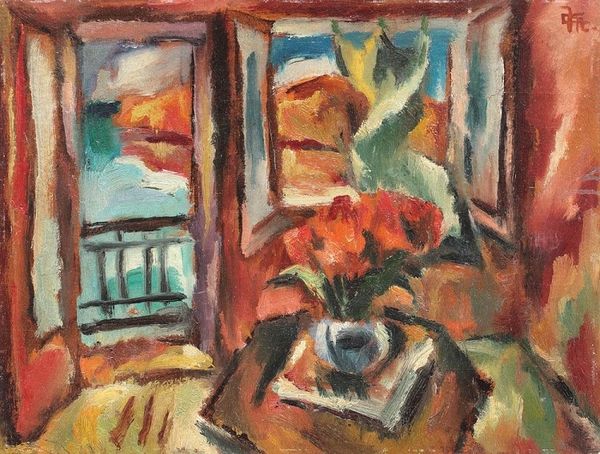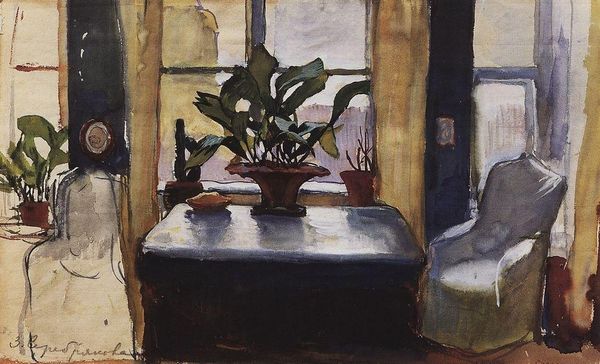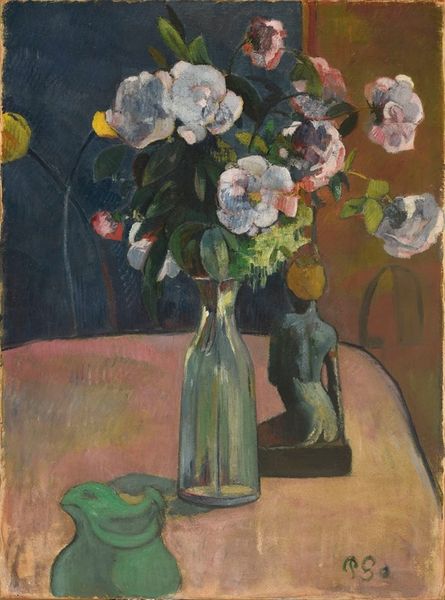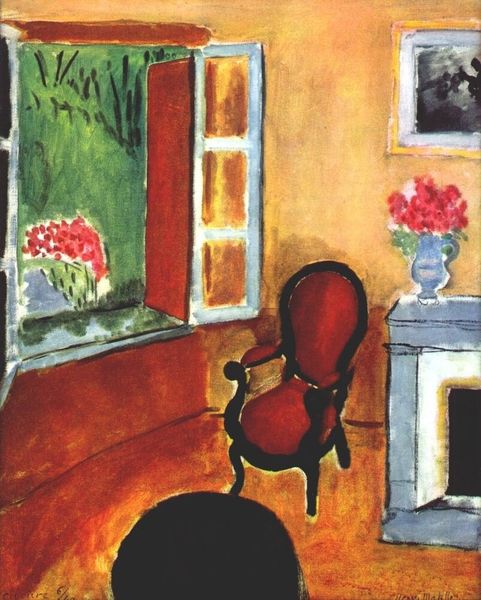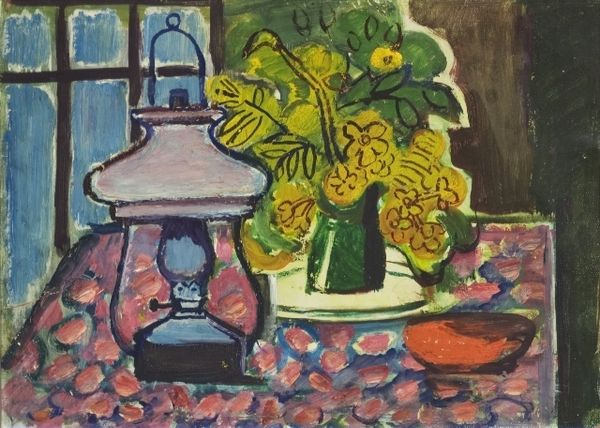
painting, oil-paint, impasto
#
portrait
#
painting
#
oil-paint
#
impasto
#
intimism
#
symbolism
#
post-impressionism
#
mixed media
Copyright: Public domain
Editor: This is "Twilight in an Intimate Room," painted by József Rippl-Rónai in 1892. The canvas utilizes oil paint with, I think, an impasto technique. There’s a stillness, a quiet domesticity… a very specific mood. What strikes you most about this painting? Curator: It's fascinating to see how Rippl-Rónai engages with the theme of intimacy during a time of significant social change. "Intimism," as we call it, wasn't just about depicting private spaces; it was a reaction against the grand, public art of the establishment. Rippl-Rónai, trained within academic settings, rejected those conventions later. What do you think is the impact of the intimate, rather than public, subject matter? Editor: It makes it feel very personal, very vulnerable even. It's a rejection of the formal, staged art of the past in favor of something genuine. Are there specific social contexts that informed Rippl-Rónai's development of the Intimist style? Curator: Absolutely. Consider the rise of photography, which captured reality with increasing accuracy, forcing painters to explore subjective experiences. Artists questioned traditional artistic values and academies, seeking a more individualistic, sincere way to express life around them, in the everyday and overlooked moments. How might the socio-political climate have influenced this movement toward depicting the intimate and the personal? Editor: I guess in a world undergoing so much transformation, maybe people were clinging to what felt safe and familiar, like home and personal relationships. Looking at how dark the colours are, could there also be a sense of isolation within this intimacy? Curator: An interesting point. That play between safety and confinement reflects the complexities of domestic life during that era. It’s a powerful statement. It's really a remarkable way to look at it, viewing the setting from outside the painter's immediate environment. Editor: I learned so much, the way Rippl-Ronai took an intimate approach challenged the norm during its time. Curator: Me too! This exploration underlines the value of seeing art not as isolated objects, but as reflections of broader cultural shifts.
Comments
No comments
Be the first to comment and join the conversation on the ultimate creative platform.
